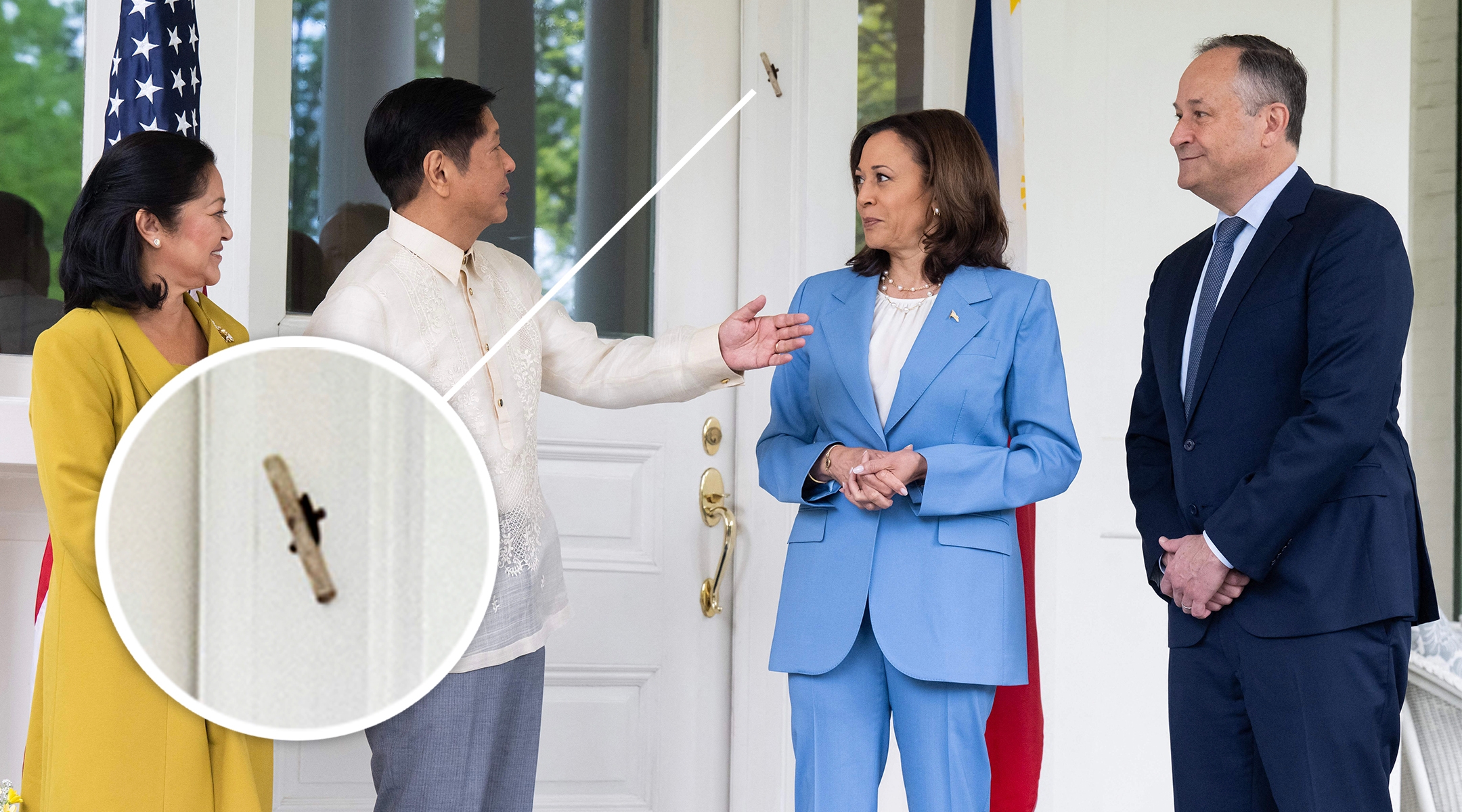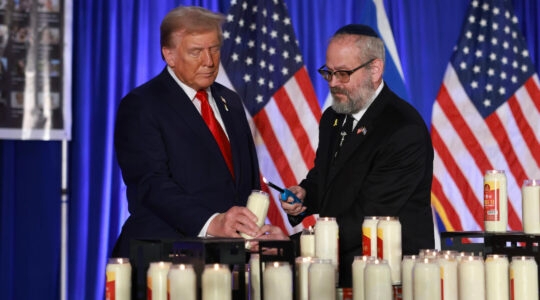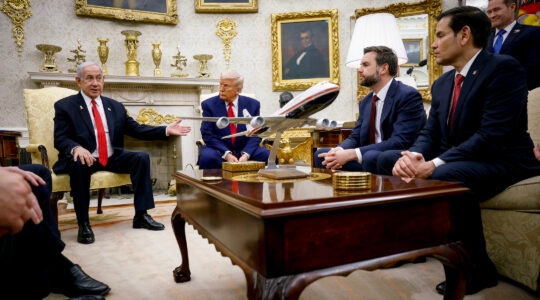Kamala Harris’ selection of Tim Walz as her running mate this week answered one big question about her presidential campaign. But it raises another: What to do with the mezuzah that went up at her house?
In 2021, after Harris moved into the vice presidential residence, her husband Doug Emhoff did what many Jews do when they move into a new home: He installed a mezuzah on its doorposts.
The act was a first in the history of the United States, which had never before had a Jewish resident in the vice president’s mansion, and teed off four years in which Emhoff has centered his Jewish identity as second gentleman. Emhoff later cited installing the mezuzah as a high point of his year.
It was also the fulfillment of a commandment under Jewish law, known as halacha. Jews are instructed to inscribe words from the Torah, including the Shema prayer, on the doorposts of their homes; this is typically accomplished by inserting parchment containing the words into a box or tube that is mounted on the doorpost.
Now, with Emhoff’s tenancy set to end Jan. 20, 2025, he will need to decide what to do with the mezuzah that hangs at its front door.
Practically speaking, the choice might be made for him: The mezuzah is on loan from The Temple, an Atlanta synagogue that was bombed in 1958, likely by white supremacists unhappy with the rabbi’s open support for racial equality.
But if Emhoff wants to take his cue from Jewish law, he’ll find clear instructions: According to halacha, when a departing resident knows the next tenant won’t be Jewish, he should remove his mezuzahs when he leaves.
Harris’ decision to bypass Pennsylvania’s Jewish governor, Josh Shapiro, for her vice president pick guaranteed that the next family to move in will not be Jewish. Walz and his wife are Lutheran, while Donald Trump’s running mate, J.D. Vance, is a Catholic married to a Hindu woman. (Another top contender in the Democratic veepstakes was Sen. Mark Kelly, whose wife, former Rep. Gabby Giffords, is Jewish.)
“Whichever party wins the election, the next person who will be moving into the vice-president’s house will be a non-Jew who won’t need a mezuzah,” Rabbi Mordechai Franken, who provides advice on Jewish law for the website Mezuzah Maven, told the Jewish Telegraphic Agency. “I highly doubt that either Mr. Vance or Mr. Walz want a mezuzah.”
The expected arrival of non-Jewish tenants doesn’t just mean that the departing resident can take his mezuzahs, according to halacha, but that he must. While there have been stories of non-Jews who have preserved left-behind mezuzahs on their doorposts as an act of respect or reverence, or even added them as a sign of solidarity, rabbinic authorities imagined that another outcome would be more likely.
“As there is a possibility that the next tenant would throw the mezuzah in the trash, the previous tenant should not leave the mezuzah in place,” Franken said.
What if the non-Jewish tenant wants to keep the mezuzahs? Several rabbis have answered that question over time and come to different conclusions, according to a summary included in a Conservative movement opinion about removing mezuzahs adopted in 2003. One 16th-century Polish rabbi said the Jewish tenant should leave the mezuzahs lest he instigate conflict with non-Jews; a slightly later Sephardic rabbi who traveled throughout Europe agreed, providing that it is known that the non-Jew will not defile the object. A 20th-century American rabbi, on the other hand, said the risk was so high that the non-Jew would later remove it that such a request should not be honored.
The ancient rabbis who first codified halacha did not anticipate that removing mezuzahs from one’s home would be the norm. Assuming that Jews would hand their homes over to other Jews in most cases, they decreed that mezuzahs should be left behind, and spent significant time exploring the intricacies of how that should happen.
The rabbis’ rulings are based not on the fact that an incoming tenant may need mezuzahs of his or her own, but on the idea that undoing a holy act should be avoided, and that removing the mezuzahs would strip the future Jewish tenant of divine protection. The consequences, they wrote, could be severe: The Talmud recounts a story in which a tenant illicitly took his mezuzahs when he left a home and later suffered the deaths of his wife and children.
In fact, Jewish law says, a departing resident must leave mezuzahs for the next Jewish tenant even if he or she wants to keep them. In such a case, the resident is permitted to swap sentimental or expensive cases with less precious substitutes or to ask — but not require — the new tenant to pay him for the mezuzahs.
It’s not clear how many mezuzahs Emhoff has in the vice president’s mansion, located at One Observatory Circle in Washington, D.C. In addition to the white one nestled in a pink hamsa that he installed on Oct. 7, 2021, with Harris standing by, at least one other — a sterling silver design with a rich U.S. Jewish history on loan through 2024 from the Magnes Collection of Jewish Art and Life in California — is known to have been installed during Harris’ term as vice president.
If Harris is elected in November, Emhoff has said that “maybe there’ll be a mezuzah on the While House.” And in the unlikely case that he will try to fulfill the halachic requirement of installing a mezuzah on the doorpost of many interior rooms, the first gentleman is going to need plenty more: The White House residence has 132 rooms and 412 doors.
JTA has documented Jewish history in real-time for over a century. Keep our journalism strong by joining us in supporting independent, award-winning reporting.






